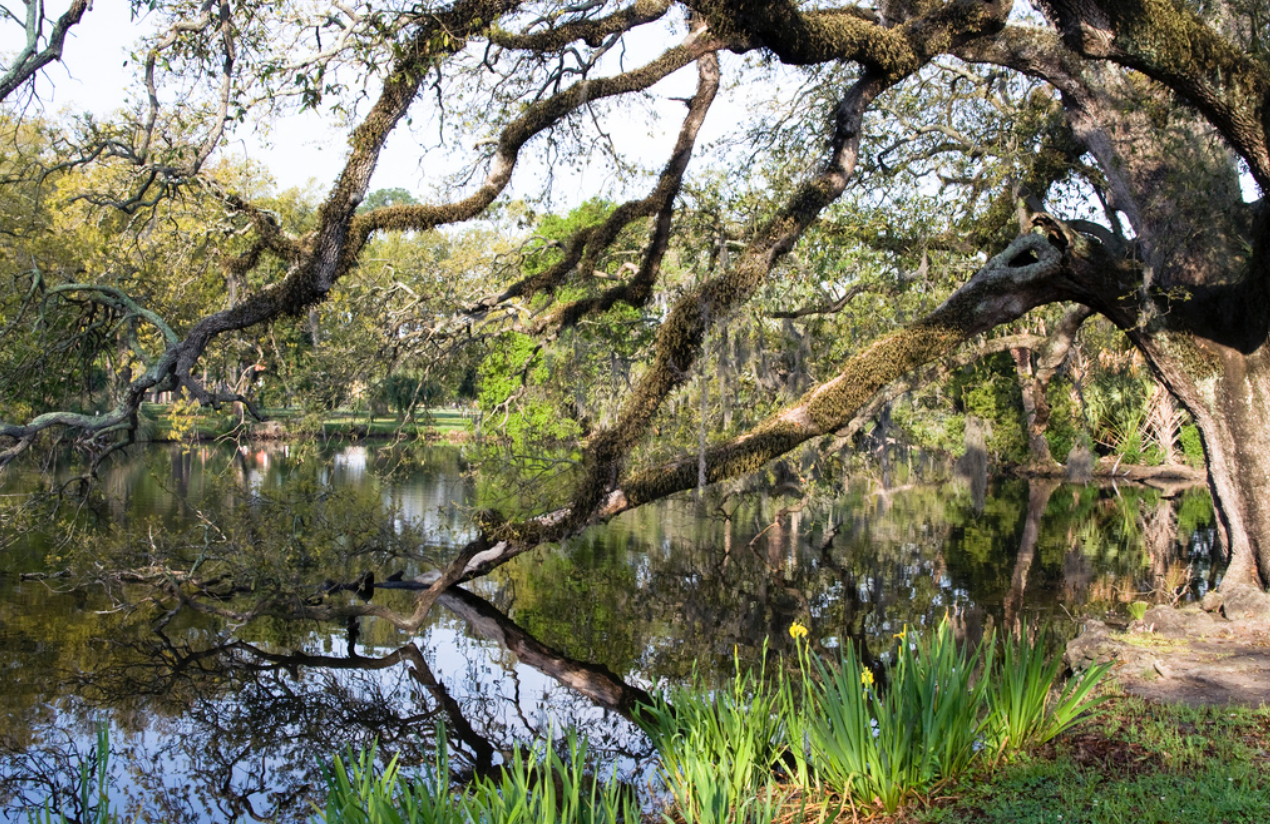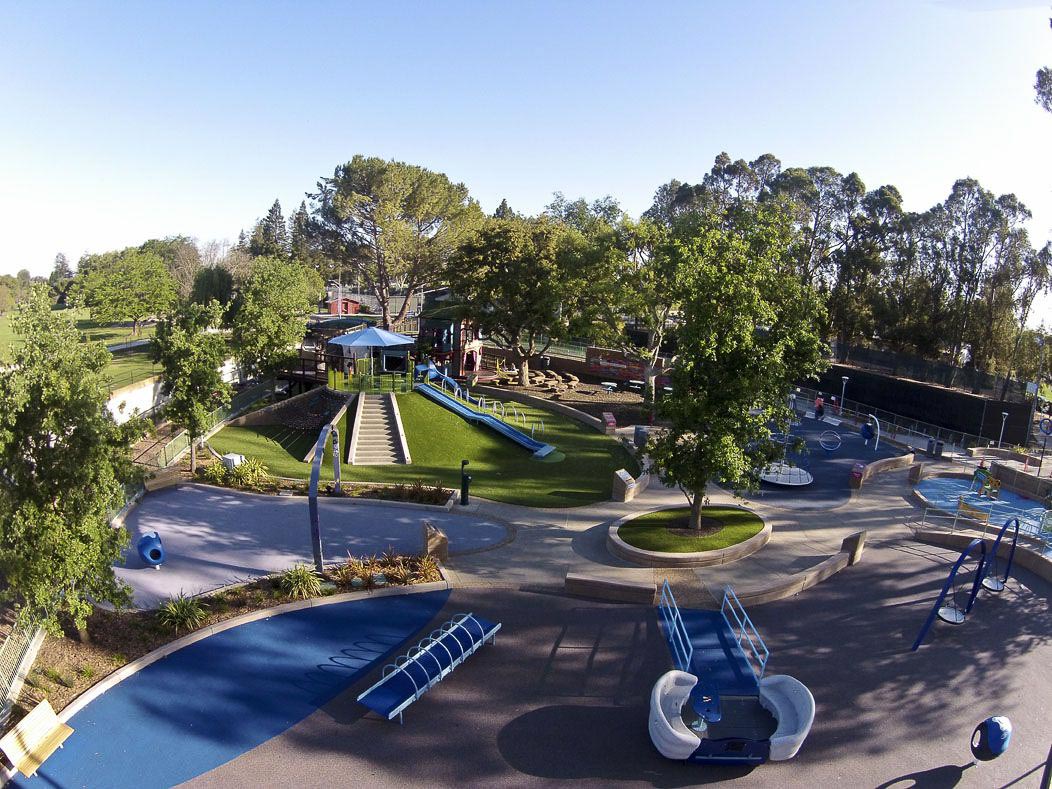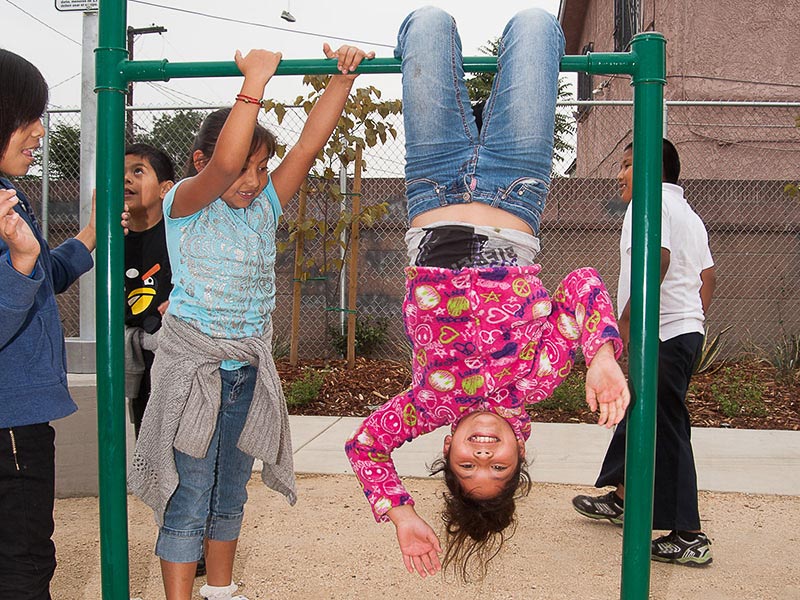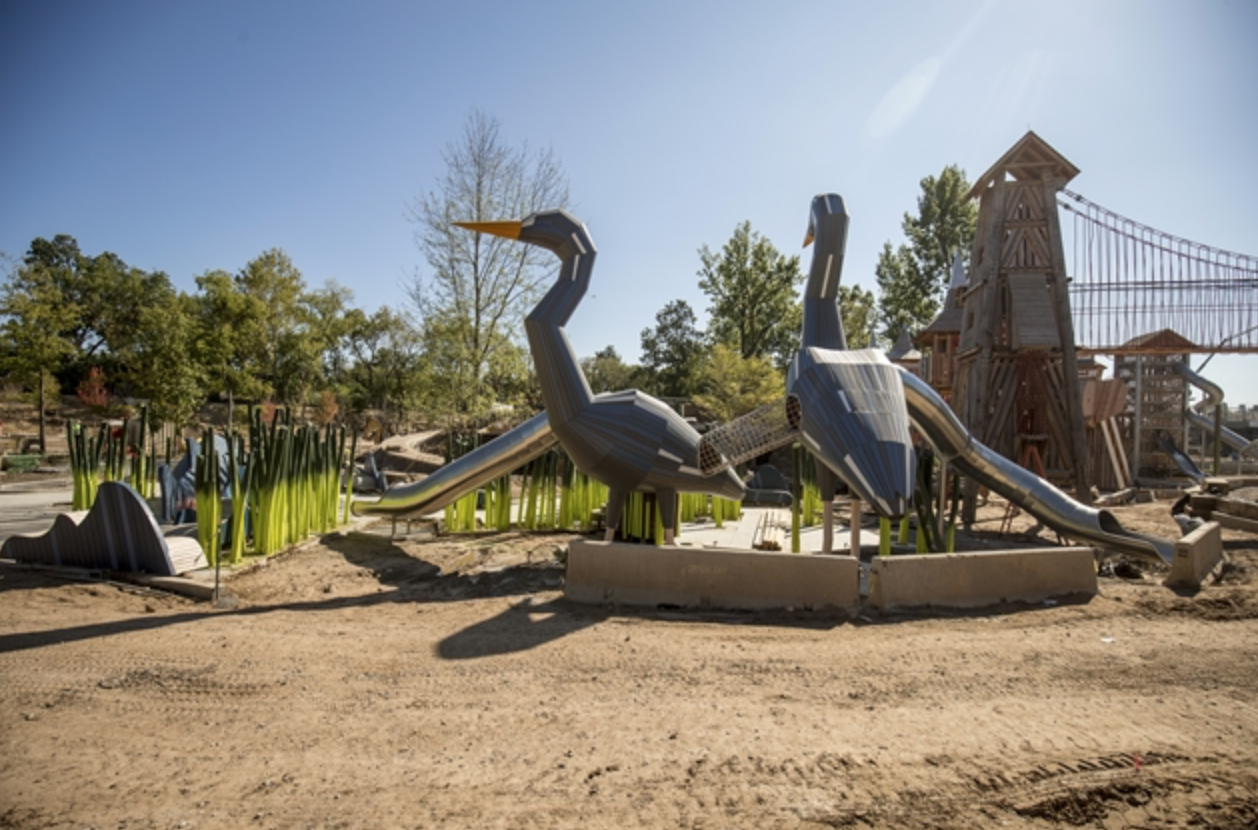The super-powered park
The blockbuster park project reached its pinnacle in 2018 with the opening of Tulsa's Gathering Place, a billionaire-funded, multi-year project along the Arkansas River. The New York Times described it as "one of the largest and most ambitious public parks ever created with private funds." But this park positioned itself as more than a vanity project. With most of the funding coming from the George Kaiser Family Foundation, Kaiser told the Times he viewed the park not just as an opportunity for children to access green space and some unique amenities, but as a way to combat the effects of segregation. "We got more and more divided over time by geography, race and class,” Kaiser told the newspaper about Tulsa, the site of the 1920s violent destruction of Black Wall Street. “So getting people together is step number one.” The development of the park was a deliberate effort to bring more funds and a different vision to the public space than the city could put forward, according to the Times:
Like many cities, Tulsa reserves its budget for fire, public safety and other nuts and bolts concerns, not elaborate parks. The Gathering Place evolved from a more modest proposal to build small sites along the river between the city and the Tulsa county suburbs with public funds matched by private donations, a prospect that was defeated by county voters in 2007. “That caused us to rethink,” said Ken Levit, the George Kaiser Family Foundation’s executive director. “The result was a better thought-out plan in the core of the city with community input at the outset.”

City Park. Photo: Flickr user John Marx.
The historic park
Founded in 1854, City Park in New Orleans continues to draw visitors with its golf course, art museum, amusement park, bandstand and beignets. But its long history also speaks to the evolution of public space and the ongoing fight for funding.
The land willed to the city was once a plantation and meeting notes from the park's board of commissioners reflect the sometimes violent reality of integration. In February 1959, for example, not long after the park's court-ordered desegregation, the park's general manager wrote in his report to the board: "There were several racial incidents in the park last month ranging from fist fights to windshield breaking." After asking the police to dispatch additional officers, the general manager seemed to think the issue was fixed, writing, "Fewer negroes are now coming into the park and there were no racial incidents within the past three weeks." The topic came up repeatedly at board meetings and the board even voted to close the park's swimming pool rather than integrate it. In 2015, the park's statue of Confederate General P. G. T. Beauregard was one of several approved to be removed by the city.
Today, after recovering from Hurricane Katrina, the park is planning to open a water park, City Splash, and voters will decide in May whether to share some of the property tax revenue currently going toward the city's Audobon Park. It would be the first time City Park, which relies mostly on self-generated revenue and roughly $2 million each year from the state, has received property tax revenue, according to the New Orleans Advocate. "City Park officials have said they would use their new money for extra security at the park and stormwater drainage projects," the newspaper reported in February.

Photo: Magical Bridge Foundation.
The accessible park
Even when playgrounds and parks meet accessibility guidelines, they can still fall short from being truly universal for users of all abilities. That's what Olenka Villarreal learned when she was looking for a nearby park for her daughter in Palo Alto, Calif. "She learned that the city’s playgrounds were all ADA compliant, but that the guidelines center around access for individuals in wheelchairs and other mobility issues, with ramps and paved walkways," explained Pomona College Magazine, which profiled the alumna. "[T]hey aren’t designed for children with impaired hearing and vision, developmental, sensory, cognitive or autism spectrum disorders."
The city offered her land and helped with designs if she came up with funding for a park that would work for not only her daughter but a community of kids. Thus, Magical Bridge, which opened in 2015, was born. Now, there are more parks on the way thanks to local fundraising and the Magical Bridge Foundation.
The park represents a shift in playground design, recognizing that compliant parks don't always mean enjoyable. It's even extended to water parks.

Photo: McKinley Avenue Park, Los Angeles Parks Department.
The pocket park(s)
When Los Angeles asked residents in 2009 what they wanted to see in their parks, the most common request was more neighborhood pocket parks, which helped inspire the city's 50 Parks Initiative. The small park-focus would help fill a critical need. As NextCity pointed out in 2015, "For all of its natural wonders, Los Angeles ranks among the most park-poor cities in the country. Too many residents, especially in the vast impoverished tracts of South Los Angeles, have no easy access to a walking path or even a ball field."
The city's parks department relied on partnerships and vacant or foreclosed properties in the wake of the housing crisis to support the new parks, according to NextCity.

Rendering of 11th Street Bridge Park proposal, OLA and Olin studios. Image: OMA/Olin.
The concept park
Repurposing old infrastructure has set apart some of the most visible recent park projects in recent years, but that's not the only thing Washington, D.C.'s 11th Street Bridge hopes to do differently. The park would be the city's first elevated park, stretching across an old bridge spanning the Anacostia River that marks some of the deep divisions within the nation's capital.
From its inception, the project sought to bring together the communities at either end of the bridge. On the one side sits Capitol Hill and the Navy Yard and on the other, historic Anacostia, where median incomes are less than half that of those across the river. Though the project isn't yet built, the nonprofit behind it is working on equity concerns now, rather than after its completion, seeking to establish a community land trust and a modest down payment assistance program with the help of other nonprofits. There's a lot still to be realized here but the project represents a step forward in the era of parks projects that bring with them the specter of gentrification and displacement.

